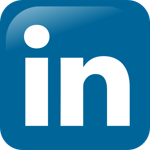Want an offsite in 2024 for your team? Or want to work on adapting your team culture? Schedule a call.

Work Imitating Life
26/05/2021
 You’ve all seen org-charts like the one picture. Your organization may even have one like this. When we create a hierarchy at work it can easily become more than just an HR-necessity to make line management functions (booking vacations, tracking health issues, performance reviews) have clear ownership. Too often it becomes indicative of how we work and think, placing ourselves mentally in a small group that reports to and interacts with the business via a single channel. Sure there’s always the ‘dotted line’ that opens up multiple reporting channels, but that can create confusion and dysfunction in itself.
You’ve all seen org-charts like the one picture. Your organization may even have one like this. When we create a hierarchy at work it can easily become more than just an HR-necessity to make line management functions (booking vacations, tracking health issues, performance reviews) have clear ownership. Too often it becomes indicative of how we work and think, placing ourselves mentally in a small group that reports to and interacts with the business via a single channel. Sure there’s always the ‘dotted line’ that opens up multiple reporting channels, but that can create confusion and dysfunction in itself.
The clarity of knowing a single person you report to can have value. We are psychologically driven to make strong connections with individuals and to function well in small groups, so a team structure (e.g. Scrum team) feels right. Looking to 1 person for authorization for non-team tasks reduces complexity and gives people a single source of truth, which in turn lowers stress and builds personal confidence.
Teams need to talk outside of their bubble
The problem comes when we don’t talk to people outside our immediate team, and when we close ourselves off to information sources that aren’t directly provided through the management chain. These aren’t choices we make consciously, but are driven by the culture of the workplace and the behaviors visible in other team members and in leadership teams. Another one of our evolved traits is to follow the patterns of behavior we observe in the dominant social fabric.
So, when you are in a leadership role one of your first tasks is to encourage more communication across all levels of the business, and in all line management directions. I have conversations from time to time with my CEO, and also with the person that cleans our office before we turn up for work (or at least I did before COVID made us 100% remote); turning up at the office extra early some days just for that. I encourage everyone that I work with to talk to anyone they want to talk to, either to enrich the work they’re engaged in, or just out of curiosity. My rule-of-thumb is that when both parties are willing to make time for that then it is the right thing to do.
Know when the org chart is useful and when it is not
The way I explain this to my own team is that I am asking them to accept that the HR org-chart is useful only in the few cases where a direct single-person reporting line gives them clarity, a sense of safety, and of being cared for. Outside of that limited set of situations I want them to act as if we were a flat team, interdependent, where all opinions and efforts are valued. In that way I become voluntarily disempowered. I cannot, from the same level, read any riot acts or lay down any laws – I’m just part of the team, like anyone else. If, however, they insist on adopting the dependency model an org-chart naively inspires, then they are creating the opposite effect, raising me into a position of power I don’t want and acting in a way that invites me to act as a tyrant. I would never put myself in such a position of power so they may well need psychiatric help if they are determined to do that willingly!
Adaptability and reliability are both essential
Some will read this and argue that self-management models like holacracy offer a way to remove all hierarchy, but many people struggle with complete self-management, and while adaptability is essential, so is reliability, and as organizations scale, ambiguity can erode accountability and create discord. My view of the work universe keeps a background organizational structure, like that aforementioned org-chart, to promote accountability within the leadership team and psychological safety for employees. We can experiment with self-management, getting our work done in whichever way makes the team function at its best, and the results most satisfying.
As Marcus Aurelius put it so well, “Just that you do the right thing, nothing else matters.’
This is what such a model of work looks like to me:

It’s a lot to take in, and I think it would make more sense as a video, but I’m just not talented that way. It’s a biological view of my software development team, but it could just as easily apply to any business function, or across a whole business.
At its core are small cross-functional teams (cells), where a clear responsibility the team has is to increase the bandwidth and frequency of communication between all team members as much as possible. In some teams there’s a cell nucleus to facilitate that (i.e. a Scrum master), but in others each node may constantly reinforce the others more like a benevolent bacterium:
 ‘Free’ nodes in the system represent specialist functions, and act more as antibodies joining cells to promote strength and growth, or as antigens to stimulate a healthy immune response. Cells are free to divide or combine to better meet customer needs, and flexible tissue structures represent a constituency of software products and projects with a collection of cells (the purple circles in my image).
‘Free’ nodes in the system represent specialist functions, and act more as antibodies joining cells to promote strength and growth, or as antigens to stimulate a healthy immune response. Cells are free to divide or combine to better meet customer needs, and flexible tissue structures represent a constituency of software products and projects with a collection of cells (the purple circles in my image).
I don’t profess that this approach is anything new, but it helps me explain how I believe we can be both more successful and more fulfilled at work. It supports autonomy and adaptability without eroding trust and confidence and can be used in a single business function or across an entire organization equally well.
We live in a world of complexity, where ‘wicked’ problems must be solved if we are to survive and flourish. Such problems are not solved by lone heroes leading the charge, but by interdependent networks willing to work towards meaningful results without needing to own the solution, often without knowing if a solution exists.
If changing how you structure your organization or how you show up as a leader interests you, check out our group coaching programs, consulting services including our corporate offsites.
Learn More
About the Author:
 KYLE RICHARDSON
KYLE RICHARDSON
My agile journey began 8-9 years ago as part of a search to align what I do for a living with the person I want to be. I see agile first as a philosophy for life, and the way that blends with both Zen and Stoic principles allows for a more holistic work life. For me what I do is an essential part of who I am so it all needs to be done with equal kindness and compassion, upheld by a strong desire to enable others along their chosen path. Working in the software industry allows me to geek out on tech and be passionate about improving communication networks and fostering strong customer-centric cultures (after all, we are all each other’s customers in one way or another).
Connect with us
 |
 |
 |
Search

WELCOME TO THE AGILITY FOR ALL LEARNING PORTAL
We offer loads of free information here in the blog and also in our
resource library
Agility for All provides coaching, consulting, and training programs. In addition to specialized consulting, you have the option to choose from:
- group coaching programs
- masterclasses
- 1-week intensive offsites
Our programs are designed to help your organization to:
- Maximize Employee Engagement
- Foster Self-Organization
- Encourage Innovation
- Attain Higher Performance
- Be More Agile
